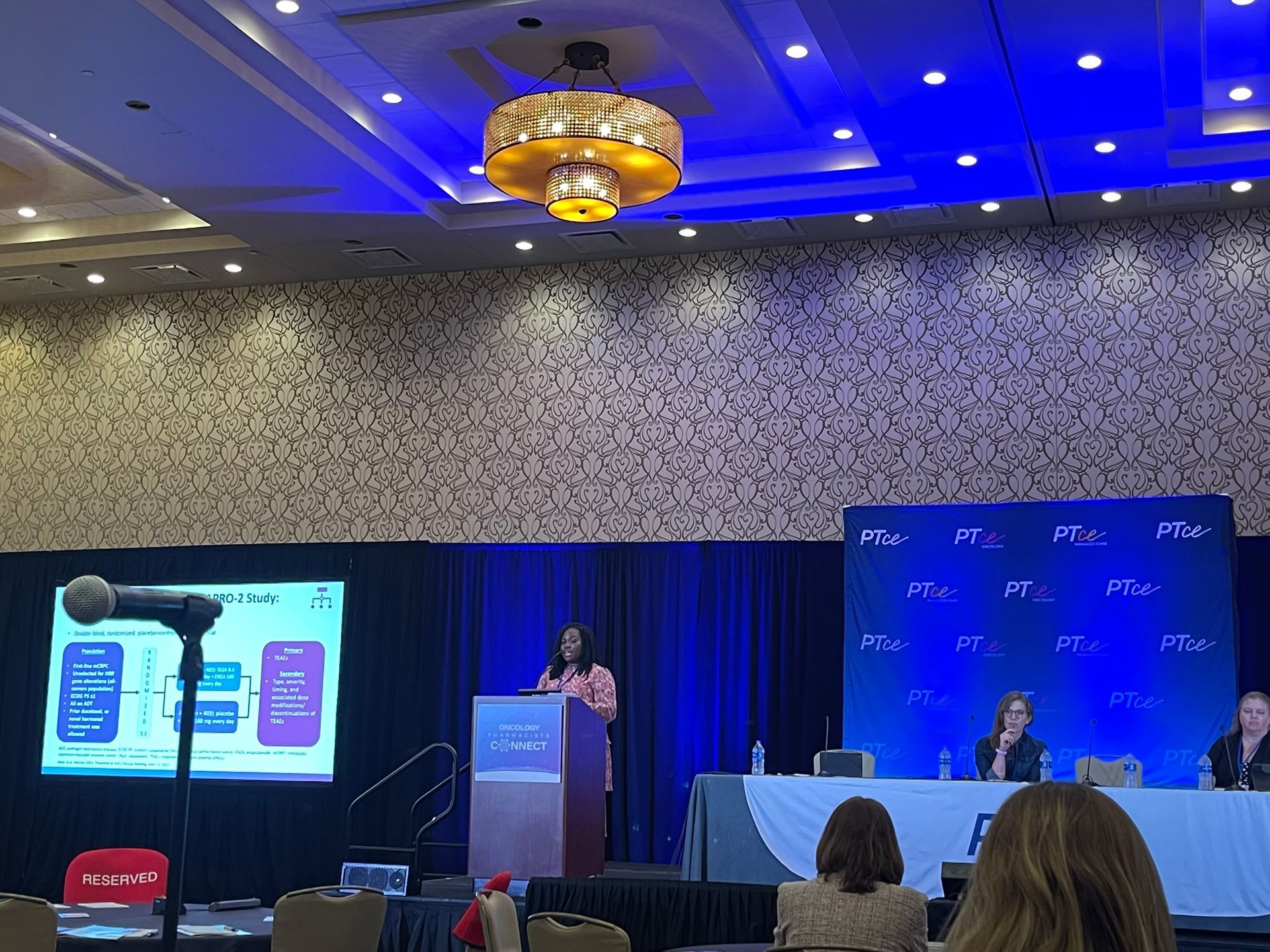How To Successfully Prepare For ACPE Accreditation
How To Successfully Prepare For Acpe Accreditation
Understanding ACPE Accreditation Standards
Understanding ACPE accreditation standards is a critical step for any pharmacy program aspiring to gain or maintain accreditation status. The Accreditation Council for Pharmacy Education (ACPE) sets forth rigorous standards to ensure the quality and effectiveness of pharmacy education programs, which directly affect the professional preparedness of future pharmacists. To comprehend these standards, program administrators and faculty must delve into the complexities of the accreditation criteria and how they apply to their specific educational settings.
The ACPE standards are structured to cover a range of key areas, including educational outcomes, teaching and learning methodologies, student services, faculty qualifications, and facilities.
Familiarity with the ACPE standards begins with a comprehensive review of the ACPE's published standards and guidelines. Each standard is designed to ensure that pharmacy programs produce competent and confident pharmacy professionals equipped to meet contemporary healthcare needs. These standards encompass core competencies like biomedical and pharmaceutical sciences, professional and clinical sciences, and effective communication. Furthermore, programs are evaluated on their ability to foster a learning environment that supports the personal and professional growth of students.
Interpreting and implementing these standards often requires collaborative efforts among faculty, administrative staff, and even students. Everyone involved must have a unified understanding of what each standard requires and how the program currently measures up. Conducting a self-assessment is a key initial step in identifying strengths and pinpointing areas for improvement. Engaging in open dialogue and workshops can facilitate the integration of best practices in teaching, curriculum development, and student assessment.
Programs should demonstrate continuous quality improvement by not just meeting the standards but striving to exceed them. This involves regular reviews and updates of curricula and teaching methods to align with advancements in the field and the evolving role of pharmacists in healthcare delivery. By understanding and applying ACPE standards deeply and broadly, pharmacy programs position themselves for successful accreditation, ultimately benefiting their students and the communities they serve.
Conducting A Self-Assessment And Gap Analysis
Conducting a self-assessment and gap analysis is a critical step in preparing for ACPE accreditation. This process involves a thorough evaluation of the existing programs, policies, and practices within the educational institution to ensure they meet the standards set forth by the Accreditation Council for Pharmacy Education. By identifying areas of strength and weakness, institutions can develop a targeted approach to address deficiencies and enhance the quality of their pharmacy education offerings.
The initial phase of a self-assessment requires the assembly of a dedicated team that includes faculty members, administrators, and possibly students, who are familiar with the institution's objectives and resources. This team should be tasked with reviewing all aspects of the pharmacy program, including curriculum design, faculty qualifications, student support services, evaluation methods, and overall program outcomes. The aim is to gain a well-rounded understanding of how the program aligns with ACPE standards.
During the assessment, it is essential to collect and analyze both qualitative and quantitative data. Surveys, interviews, and focus groups with stakeholders such as students, alumni, and employers can provide valuable insights into the program's effectiveness and areas needing improvement. Furthermore, measuring metrics such as student performance, graduation rates, and employment outcomes can provide a solid foundation for identifying discrepancies between current practices and accreditation requirements.
Once the data has been collected, the team should perform a gap analysis. This involves comparing the current state of the program with the desired state as outlined by ACPE standards, identifying gaps that need to be filled to achieve compliance. Prioritizing these gaps is crucial, as some issues may require immediate attention while others can be addressed over time.
Finally, a comprehensive action plan should be developed, detailing specific steps to bridge identified gaps, allocate resources effectively, and set timelines for implementation. Continuous monitoring and reassessment will ensure that progress is made and maintained, ultimately leading to a successful accreditation outcome. Through this diligent process, institutions not only prepare for accreditation but also foster a culture of continuous improvement and excellence in pharmacy education.
Developing A Comprehensive Accreditation Plan
Developing a comprehensive accreditation plan is a critical step for educational institutions aiming to achieve ACPE accreditation successfully. This plan serves as the foundation, guiding the school through the meticulous process of meeting the Accreditation Council for Pharmacy Education’s standards. Begin by forming an accreditation task force composed of key stakeholders, including faculty members, administrators, and, if possible, external consultants experienced in ACPE processes.
This team will be responsible for interpreting accreditation standards, assessing the current status of the institution’s pharmacy program, and identifying areas requiring improvement. A clear understanding of ACPE standards and guidelines is essential, as it will inform every phase of the planning process.
Next, conduct a thorough gap analysis to evaluate existing program structures, policies, and outcomes against the ACPE standards. This analysis will identify strengths and weaknesses, enabling targeted action to address deficiencies. The gaps identified should then guide the formation of specific, measurable objectives. Establishing timelines for achieving these objectives is crucial to ensure that progress is consistent and systematic. Additionally, resource allocation is an important consideration as part of this planning.
Ensure that the program has adequate faculty, facilities, and financial resources to meet the desired standards.
Communication is a vital component of the accreditation plan. Keep all stakeholders informed and engage them regularly through meetings, reports, and updates. This involvement fosters a collegial environment where continuous feedback can flow, which is essential for making adjustments when needed. Furthermore, develop a robust internal review system to monitor progress against the accreditation requirements. Regular assessments will help in identifying additional areas for improvement and will keep the institution aligned with its accreditation goals.
Finally, ensure documentation is comprehensive, including all processes, modifications, and evaluations. A well-documented record will be invaluable when preparing for the site visit, serving as evidence of compliance with ACPE standards and demonstrating the institution’s commitment to continual improvement in pharmacy education.
Engaging Faculty And Staff In The Preparation Process
Engaging faculty and staff in the preparation process for ACPE accreditation is crucial to achieving a successful outcome. One of the fundamental steps in this engagement is fostering a culture of collaboration and open communication among all team members. This means creating an environment where faculty and staff feel valued and encouraged to contribute their ideas and perspectives. By organizing regular meetings and workshops dedicated to accreditation preparation, leadership can ensure that everyone is informed about the goals, timelines, and standards required by ACPE.
To motivate faculty and staff, it is essential to communicate the significance of achieving ACPE accreditation, not just for the institution but for their professional growth as well. Highlighting the direct impact on student success and institutional reputation can galvanize efforts, while showcasing how participation in the process can enhance their teaching practices and academic standing. Additionally, recognizing and rewarding the efforts of those involved in the accreditation process can further encourage active participation, making faculty and staff feel appreciated for their hard work.
Providing ample training and resources is also pivotal. Faculty and staff may need guidance on understanding and interpreting ACPE standards, therefore offering workshops, seminars, or even online resources tailored to specific standards can be highly beneficial. This not only increases confidence and competence in meeting the requirements but also fosters a sense of readiness and capability among team members.
Another key element is to assign roles and responsibilities clearly, ensuring that each member knows their specific contributions to the overall preparation. This can help prevent confusion and overlap of tasks, allowing the process to run more smoothly and efficiently. Establishing smaller committees or task forces dedicated to different aspects of the accreditation can also help manage workloads more effectively.
Involving faculty and staff in the preparation process is not merely an administrative necessity but an opportunity to strengthen the academic community. Through collaboration, communication, and recognition, the accreditation journey becomes a shared mission, boosting morale and fostering a cohesive institutional effort towards attaining ACPE status.
Compiling And Organizing Required Documentation
Compiling and organizing the required documentation for ACPE accreditation is a critical step in ensuring a smooth and successful accreditation process. It involves gathering all necessary evidence and systematically categorizing it to demonstrate compliance with ACPE standards, which will be thoroughly reviewed during the accreditation process. Begin by thoroughly reviewing the accreditation standards and identifying specific documentation requirements for each standard.
This includes institutional policies, curriculum details, faculty qualifications, assessment data, and student progression information, among others. This initial phase helps in understanding the scope and breadth of documentation needed, providing clarity on what needs to be compiled.
Once you have a comprehensive understanding of what is required, create a detailed checklist or matrix that maps each required document to the corresponding ACPE standard. This tool serves as an organizational backbone to ensure nothing is overlooked. Set up a centralized repository system, whether digital or physical, where all documents can be consistently stored and easily accessed. Digital solutions such as document management systems or cloud-based storage can enhance efficiency, enabling easy sharing and collaborative reviewing among all stakeholders involved in the preparation process.
Next, establish guidelines for naming conventions and document formatting to maintain consistency. This step is crucial to prevent confusion and streamline the reviewing process, both internally and for the ACPE reviewers. Regularly scheduled meetings with the accreditation team can be invaluable for tracking progress, ensuring deadlines are met, and addressing any documentation gaps or inconsistencies.
Consider creating a timeline that allows for periodic review and revision of documents. Deadlines should be set to allow for ample time to address any issues identified during internal review. Engage with faculty and staff members who are responsible for generating or maintaining documents to ensure accuracy and relevance of the data being collected. Regular communication and training sessions can be helpful in keeping everyone aligned with the requirements and procedures.
Finally, meticulous review and quality assurance checks should be conducted to ensure that all documentation is complete, accurate, and ready for submission, reflecting the institution's commitment to excellence in pharmaceutical education.
Preparing For The On-Site Evaluation
Preparing for the on-site evaluation is a critical step in achieving successful ACPE accreditation, and it necessitates thorough planning and organization. Institutions must ensure that all stakeholders are informed and engaged in the process, from faculty and staff to students and administrative personnel. Open lines of communication are essential, as they help in clarifying expectations and responsibilities to ensure everyone is aligned with the accreditation goals.
The institution should perform a comprehensive self-assessment against ACPE standards, identifying strengths and areas for improvement. This process not only highlights where the institution already excels but also where enhancements are needed to meet or exceed accreditation criteria.
Once the self-assessment is complete, crafting a well-organized self-study report that clearly and concisely presents the institution's compliance with ACPE's standards is paramount. This document will serve as a critical reference during the on-site evaluation, so it should be thorough, evidence-based, and articulate. Institutions should ensure that their physical facilities are in top condition, as the evaluation team will likely assess the learning environment and resources available to support the institution’s educational objectives.
Equally important is that all faculty and staff are prepared to discuss their roles and contributions toward meeting the ACPE standards and how their work supports the institution's mission and strategic goals.
Rehearsing for interviews and discussions that will occur during the on-site visit is important, as faculty and staff should be comfortable articulating their roles, contributions, and the institution’s strengths. Regularly scheduling mock evaluations or practice sessions can help alleviate anxiety and ensure everyone is prepared. Moreover, the institution should gather and organize all relevant documentation and make it easily accessible for the visiting team.
This includes course materials, assessment tools, program outcomes, and minutes from key meetings. Making a positive impression during an on-site evaluation often boils down to how well the institution presents itself, so attention to detail, hospitality, and professionalism are key. A thorough, organized approach will help demonstrate the institution’s commitment to meeting ACPE standards and achieving excellence in pharmaceutical education.
Continuous Improvement And Maintaining Accreditation
Continuous improvement is a fundamental component of maintaining ACPE accreditation for pharmacy education programs. Once accreditation is achieved, the journey doesn't stop. It requires an ongoing commitment to enhancing educational quality and meeting the ever-evolving standards set forth by the accreditation body. Programs must embed a culture of continuous improvement within their institutions, ensuring that every stakeholder, from faculty to students, is engaged in this ongoing process.
To maintain accreditation, programs must regularly review and assess educational outcomes against the goals and objectives outlined during the initial accreditation process. This involves implementing robust assessment mechanisms to gather data on student performance, program efficacy, and alignment with accreditation standards. By closely monitoring these metrics, institutions can identify areas for growth and implement necessary changes proactively.
Engagement with stakeholders is crucial in maintaining accreditation. Faculty members should be encouraged to engage in professional development activities that enhance their teaching and assessment skills. Encouraging open communication channels where students can provide feedback about their educational experiences is also vital. This feedback should be systematically reviewed and used to inform curriculum improvements, ensuring the program remains relevant and challenging.
Moreover, programs should foster partnerships with external organizations and industry leaders to keep abreast of shifts in the pharmaceutical field, integrating these insights into the academic curriculum to ensure that students are prepared for real-world challenges. This external engagement not only enhances the curriculum but also strengthens the program’s reputation and relevance.
For successful continuous improvement, institutions must cultivate a mindset focused on innovation. This involves not being complacent with current successes but constantly striving to find new ways to deliver educational excellence. Accreditors appreciate programs that demonstrate an ability to adapt and improve over time, ensuring that graduates possess the competencies needed in a dynamic healthcare landscape.
Ultimately, maintaining ACPE accreditation is not a static achievement but an ongoing process that requires dedication, flexibility, and a robust commitment to continuous improvement. This ensures that the program not only meets current standards but is a leader in pharmacy education, ready to meet future challenges.

Slide title
Write your caption hereButtonSlide title
Write your caption hereButtonSlide title
Write your caption hereButton
Blogs
Community Resource Solutions Group
Transforming Health Equity Initiatives with Proven Strategies and Insights.
Business Hours
Mon-Fri 9 am-5 pm
Houston, TX
TeL: 346-436-7986
MENU
STAY CONNECTED
Contact Us
We will get back to you as soon as possible.
Please try again later.












